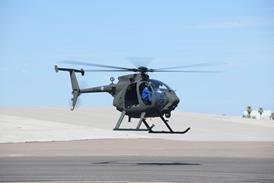Don't expect a war of words as the battle for the 50-seater turboprop market heats up - expect a war of whispers instead.
Both Saab with its top-of -the-range high-performance Saab 2000 and the Bombardier Regional Aircraft (BRAD) de Havilland Dash 8Q series are claiming technological advances which are bringing the comfort and noise levels associated with jet aircraft to the world of turboprops.
BRAD president Pierre Lortie, speaking at Le Bourget, outlines the problems that turboprop operators have with the perception by passengers of small aircraft that are noisy, cramped and subject to turbulence.
Problem
Others see it differently. AI(R)'s Nick Godwin, speaking at the Royal Aeronautical Society, says the problem is more that when passengers see propellers on an aircraft they believe it - and the airline - is old-fashioned.
Not so, say Saab officials. Marketing man Geoff Hearn says passengers look for frequency, location and cost. If the problems of noise and vibration are solved, frequent flyers are happy to re-book on the airline with the turboprops.
And so the turboprop manufacturers have turned their attention to noise and comfort issues with both Saab and Bombardier staking claims as maker of the quietest aircraft.
Certainly anyone flying the two aircraft will notice the difference compared with more traditional propeller driven aircraft. As Hearn says: "If you close your eyes you could be on a jet."
Both manufacturers have been arranging test flights during the week and reiterating the message that the turboprop market exists, will continue to grow and is a value-for-money necessity for regional airlines.
"We have taken this opportunity to bring people from the airlines and the industry onto the aircraft to hear the differences for themselves," says Hearn.
On display at Le Bourget is a Dash 8-300 operated by Austria's Tyrolean Airways and dubbed "The Sounds of Silence", and a Saab 2000 operated by the French airline, Regional.
The manufacturers have different approaches to the noise issue. The Dash 8 has been fitted with a noise and vibration system (NVS) which Rodney Williams, director of BRAD's product planning, says is performing even better than anticipated, achieving a noise level as low as 76.4 dBA at 7,620m (25,000ft) at the recommended 1,050rpm.
Williams says that the results were even more spectacular when the propeller rpm was dropped to 900 - an average noise level of 75.1 dBA.
Taking a first flight on the quieter Dash were Julian Blough and Richard Lane, chief executive officer and marketing director respectively of Ultra Electronics, which developed the NVS for BRAD.
NVS does not use counter-noise as do other systems. It goes to the source of the noise: Airframe vibration caused by the pressure pulses beating against the fuselage. Microphones in the cabin measure noise levels. This information is sent to an on-board computer which then signals tuned vibration absorbers(TVA) to send out counter vibrations to reduce the original vibration.
Saab had already fitted Ultra's active noise control system to the 2000 to reduce the traditional low frequency sound by counteracting the underlying noise in the cabin with noise of an opposite waveform.
Improved
Saab engineers then improved the results by moving the propellers forward by extending the shaft by 5cm (2in) which has made significant differences by minimising interference when the blades pass in front of the engine air intake.
In seats next to the engines, the noise is reduced to as little as 73.3 dBA and even at the noisier back of the aircraft it is still less than 76 dBA.
The leather-seated Saab 2000 is a comfortable ride. The rate of climb is fast - the aircraft holds a world record for having climbed to 9,000 metres (29,000 feet) in eight minutes with a standard aircraft - and also has a steep approach capability which gives access to downtown airports such as London City.
As Hearn says, you need to fly them both to make up your own mind, but one thing is for certain: The turboprop manufacturers are fighting back to beat those old perceptions.
Source: Flight Daily News























